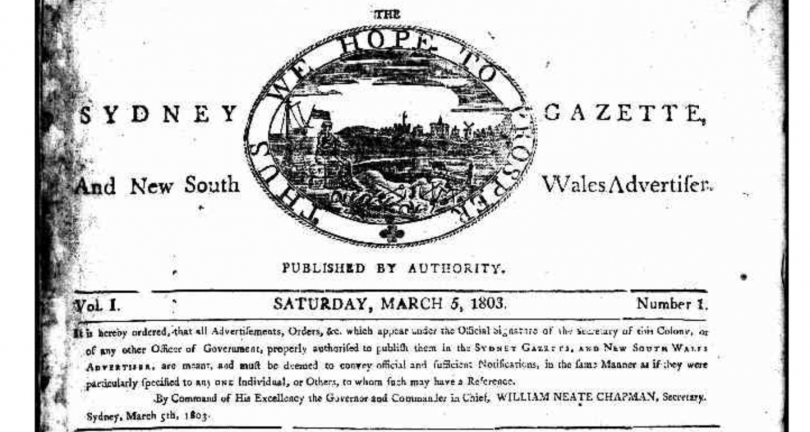Australia is often considered to be a relatively young country. However, this lack of longevity hardly correlates to the significant verbosity and complexity of the nation’s newspaper history.
It was George Howe’s Sydney Gazette and New South Wales Advertiser, first published on the 5th of March 1803, which ushered in two centuries of the world’s finest printed news.
“Australia was known as having the highest per capita consumption of newspapers,” according to Michael Herlihy of the Australian National Library.
“With all the changes to titles, publishers, ownership, and frequency of circulation, researching Newspapers in Australia is a complex subject,” he said.
Now, thanks to The Australian Newspaper Plan, more than a thousand newspaper titles from every state and territory have been digitised by the National Library for public access.
With this historic and vast archive, we can begin to understand the peaks and troughs of Australia’s newspaper circulations – and analyse the effect of a waning print press industry on the nation.
###
The National Library of Australia provides digital access to 1486 newspapers which have ceased circulation, supplemented with the initial publishing year and the final year of circulation.
Using these figures, the following line graph visualises the total quantity of former newspapers in circulation from 1803 to 2019.
It was during WWI that Australia had the largest circulation of recorded newspapers, before a dramatic reduction in newspapers in the post-WWII 1950s.
The following line graph tracks the circulation of rags separated by state and territory. New South Wales dominates the long-term trajectory, but Victoria commands the peak of the graph.
Another important analytical angle, to filter through data visualisation, is the duration of newspaper circulation.
Which towns and states lay claim to the longest standing publications, before they finally met their demise?
The following tree map can explain.
Click through each state to analyse duration by individual suburb.
Geographically, Australia’s newspaper coverage has depleted in recent times.
The following maps will show you a snapshot of newspaper circulations at the mid-point and end of each millennium.
Keep in mind, the archive only includes newspapers which have ceased circulation.
1850 newspaper circulation:
View 1850 map in a full screen map
1900 newspaper circulation:
View 1900 newspaper circulation in a full screen map
1950 newspaper circulation:
View 1950 map circulation in a full screen map
2000 newspaper circulation:
View 2000 map circulation in a full screen map
One final point to make.
There’s an understanding in the journalism industry that as newspaper sales continue to decline, as traffic cascades onto social media and online consumption, that traditional media outlets can move to a digital business model – reliant on subscriptions – to sustain their necessary work.
While this may be true to an extent, the online consumption of this media may not be as significant as desired.
According to GoogleTrends data, the most renowned mastheads of Australian print media have failed to secure a consistent upward trajectory of search hits since records began in 2004.

If the stories communicated in these colourful collections of data leave you with a pessimistic view on the future of an industry seemingly clinging to life, let Professor of Journalism, Brian McNair, express a message which may encourage your comfort:
“Personally, I believe that print will survive as a niche medium, like vinyl records, for as long as there is a demand for the tactility of words stamped on dead trees.”
“And for a long time yet there will be those who refuse to join the online era, or who cannot for various reasons.”
You can access the information used in the original source of data here, or a spreadsheet of relevant data here.
Featured image: Front page of Sydney Gazette and New South Wales Advertiser, according to the Trove archive.







